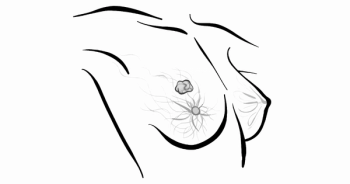
AI Tool Earns FDA Breakthrough Device Designation in Pancreatic Cancer

The DAMO PANDA can accurately detect pancreatic cancer lesions, and FDA breakthrough therapy designation aims to accelerate its development and approval.
- The FDA has granted breakthrough device designation to the DAMO PANDA, an artificial intelligence (AI)-powered model used to detect pancreatic cancer.
- The approval is supported by a large-scale study where PANDA achieved a sensitivity of 92.9% and specificity of 99.9% for pancreatic ductal adenocarcinoma (PDAC) lesion detection.
- PANDA also outperformed mean radiologist performance by 34.1% for sensitivity and 6.3% in specificity for PDAC detection.
The AI-powered DAMO PANDA tool has been granted breakthrough device designation by the FDA, accelerating the review process for the device and marking an important moment in the use of AI for cancer detection and diagnosis.1
PANDA uses AI to identify lesions on CT imagery and achieved a sensitivity of 92.9% and specificity of 99.9% in a real-world validation in 20,530 patients, outperforming mean radiologist performance by 34.1% and 6.3% in sensitivity and specificity, respectively.2
A large-scale study published in Nature Medicine evaluated PANDA and found that it achieved an area under the curve 0.996 (95% CI, 0.991-1.00) for lesion detection and 0.987 (95% CI, 0.975–0.996) for PDAC identification. 2 Further, PANDA used with noncontrast CT showed noninferiority to radiology reports using contrast-enhanced CT. According to study authors, this can be attributed to deep learning models’ greater sensitivity to grayscale imaging intensity than human eyes, which are better at identify changes in color than intensity.
PANDA, which is short for “pancreatic cancer detection with AI,” was trained on a dataset of 3208 patients and launched in November 2023. It has been used hospitals and physical examinations in China. PANDA also has the potential to detect cancers beyond pancreatic, including lung, breast, and liver.1
“PANDA exhibits effective generalizability to external centers, varying imaging protocols and real-world populations,” authors of the study published in Nature Medicine wrote. 2
Given pancreatic cancer’s low relative survival rate of 13% at 5 years,3 PANDA’s tool offers new hope for large-scale earlier detection and treatment, especially given its ability to identify PDAC lesions using noncontrast CT, which exposes patients to lower radiation doses, minimizes risk of adverse reactions to contrast agents, and comes at lower additional costs.2 Additionally, other noninvasive diagnostic tools like liquid biopsy still don’t offer high levels of detection for pancreatic cancer—only about 50% to 60%, according to study authors.
DAMO Academy, the research team behind PANDA, has also entered a collaboration with the World Health Organization to use the tool in low-resource regions.1









































